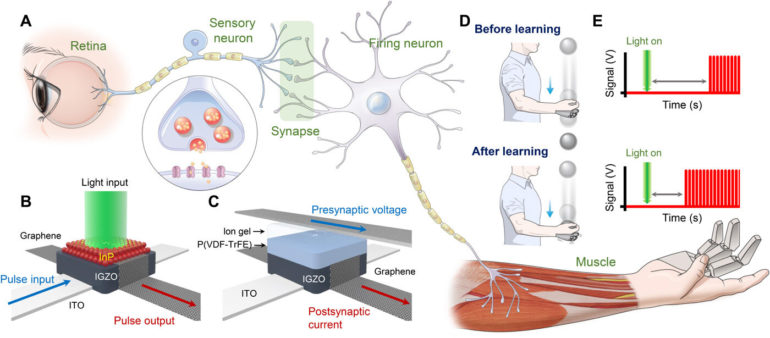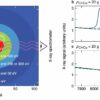With a simple artificial nervous system now able to mimic human responses to light, scientists are learning more about how to program such technology for use in medical robotic prostheses.
Just as when the human eye responds to bright light, or a hand from a hot surface or a knee jerks in reaction to impact with a hard object, artificial nervous systems can also operate to react to their environment. However, these responses are automatic. Now, researchers seek to program artificial neurons to consciously respond to external stimuli.
So far, three universities in South Korea have succeeded in engineering an artificial system able to consciously respond to outside stimuli. This system uses a tool called a photodiode to convert light into an electrical signal, a transistor to mimic a mechanical synapse, an artificial neuron circuit to simulate the brain and a robotic hand. When the photodiode detects light, the signal to respond travels through the transistor as if along the synapse of a neuron, which then travels to the artificial neuron circuit in order to prompt the robotic hand how to react.
At this time, scientists are dropping a ball from above this system to test how the artificial entity uses light to identify the motion and curls the fingers of the robotic hand in order to catch the falling ball. The intended process models the way in which the human brain registers a stimulus such as light entering the eye and then responds in kind with an action such as a turn of the head. That action stems from neuron signals directing the muscles how to react in response to the light stimuli, ideally all within a fraction of a second.
Since this experiment began back in 2018, researchers have reported the time taken for the artificial neural system to cup its robotic hand has decreased from 2.56 seconds down to 0.23 seconds. Scientists state that a main goal of this project is to assist patients suffering from neurological damage to regain control over their muscular movements. So far, a similar experiment managed to use such an artificial system to control the limb movement of a cockroach. Research aims to further develop these systems to improve the potential of robotic assistance to humans.
Moreover, beyond assisting humans in a secondary capacity, this kind of robotic technology could hold promise for more independent robotic entities employed to carry out tasks on their own.
Neural network CLIP mirrors human brain neurons in image recognition
More information:
Seongchan Kim et al, Artificial stimulus-response system capable of conscious response, Science Advances (2021). DOI: 10.1126/sciadv.abe3996
2021 Science X Network
Citation:
Artificial nervous system uses light sensing to catch objects like humans do (2021, April 12)
retrieved 12 April 2021
from https://techxplore.com/news/2021-04-artificial-nervous-humans.html
This document is subject to copyright. Apart from any fair dealing for the purpose of private study or research, no
part may be reproduced without the written permission. The content is provided for information purposes only.



